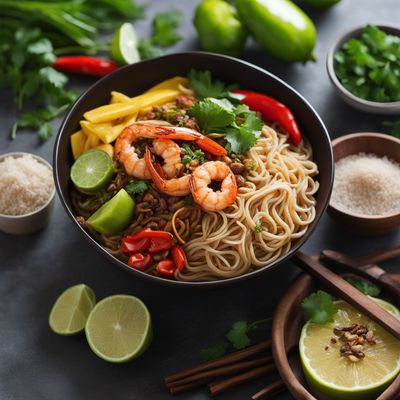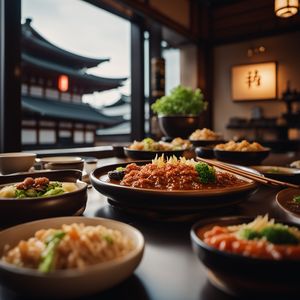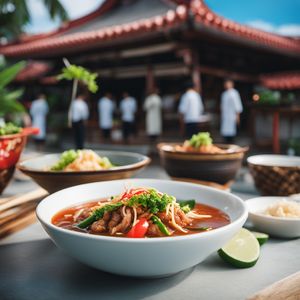
Dish
Omusoba
Omelette with noodles
Omusoba is made by stir-frying noodles, such as udon or soba, with vegetables, such as cabbage and carrots, and then adding beaten eggs to the pan. The dish is then cooked until the eggs are set and the noodles are crispy. Omusoba is usually served hot, with a side of pickled ginger and soy sauce. It is a filling dish that is high in protein and carbohydrates, and is a good source of vitamins and minerals, such as vitamin B and iron.
Origins and history
Omusoba is a popular street food in Japan, and is often sold in food stalls and restaurants. It is believed to have originated from the Chinese dish called chow mein, which was introduced to Japan during the Meiji period. Over time, the dish has evolved to include local ingredients and flavors, such as bonito flakes and seaweed. Today, omusoba is a staple in Japanese cuisine, and is enjoyed by people of all ages.
Dietary considerations
Omusoba is a vegetarian dish that is suitable for people who are on a high-carbohydrate or high-protein diet. It is also nut-free and dairy-free, making it a good option for people with food allergies or intolerances. However, it is high in sodium and calories, so it should be consumed in moderation.
Variations
There are many variations of omusoba, depending on the region and the cook. Some versions include meat or seafood, while others use different types of noodles, such as ramen or somen. Some cooks also add spices or sauces to the dish for added flavor.
Presentation and garnishing
Omusoba can be presented on a plate with a side of pickled ginger and soy sauce. It can be garnished with bonito flakes or seaweed for added flavor and texture.
Tips & Tricks
To make the dish healthier, use whole wheat noodles and a small amount of oil for stir-frying. You can also use egg whites instead of whole eggs to reduce the fat and cholesterol content. To add more flavor, you can add chopped onions, garlic, or mushrooms to the vegetables before stir-frying.
Side-dishes
Omusoba is usually served with a side of pickled ginger and soy sauce. It can also be served with a side of salad or vegetables.
Drink pairings
Omusoba pairs well with hot drinks, such as tea or coffee. It can also be served with fruit juice or soda, depending on the preference.
Delicious Omusoba recipes
More dishes from this category... Browse all »

Affunnatielle
Italian cuisine

Ajitsuke tamago
Japanese cuisine

Anglesey Eggs
Welsh cuisine

Balbuljata
Maltese cuisine

Black Pudding Scotch Egg
English cuisine

Búbos rántotta
Hungarian cuisine

Chai poh neng
Chinese cuisine

Chhài-pó͘-nn̄g
Taiwanese cuisine




